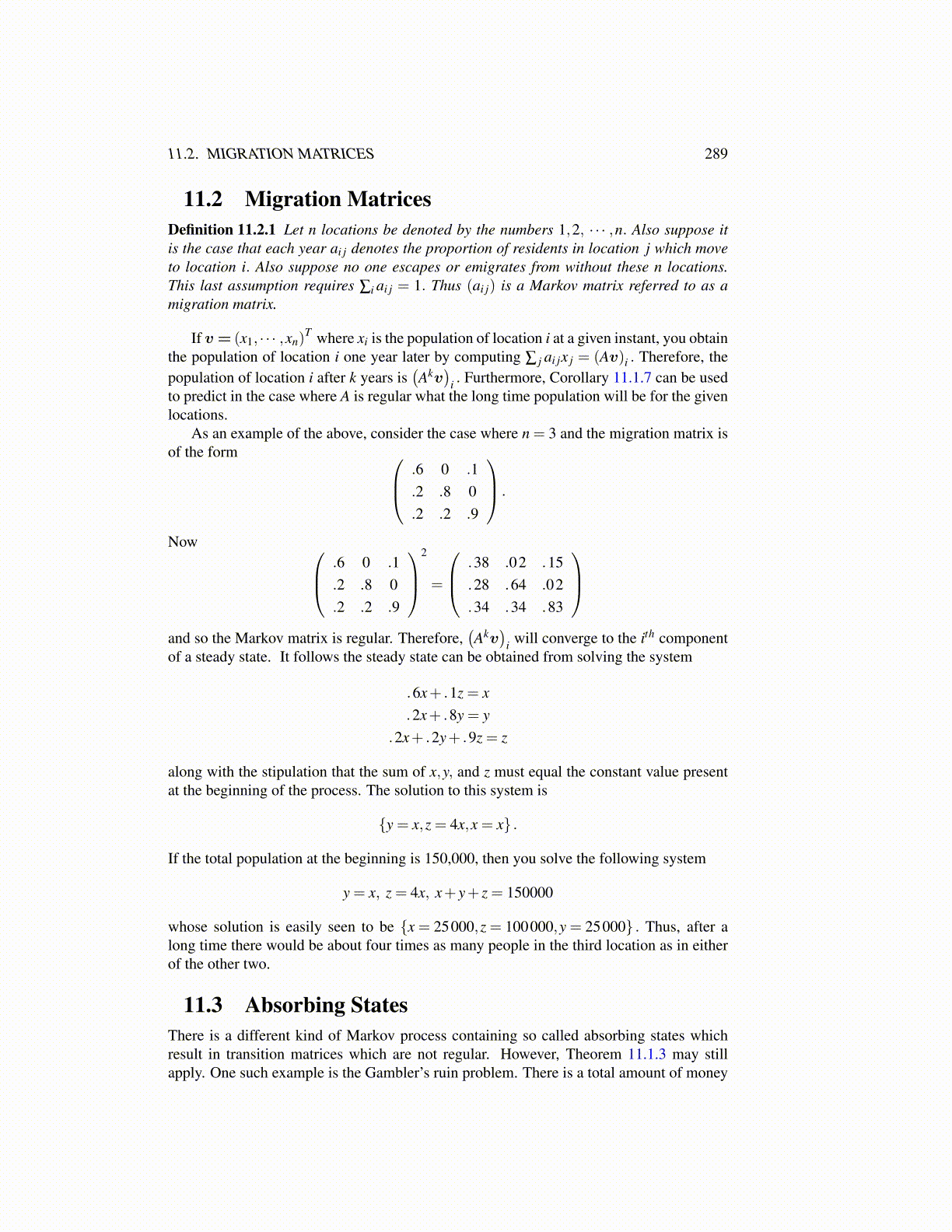
11.2. MIGRATION MATRICES 289
11.2 Migration MatricesDefinition 11.2.1 Let n locations be denoted by the numbers 1,2, · · · ,n. Also suppose itis the case that each year ai j denotes the proportion of residents in location j which moveto location i. Also suppose no one escapes or emigrates from without these n locations.This last assumption requires ∑i ai j = 1. Thus (ai j) is a Markov matrix referred to as amigration matrix.
If v = (x1, · · · ,xn)T where xi is the population of location i at a given instant, you obtain
the population of location i one year later by computing ∑ j ai jx j = (Av)i . Therefore, thepopulation of location i after k years is
(Akv
)i . Furthermore, Corollary 11.1.7 can be used
to predict in the case where A is regular what the long time population will be for the givenlocations.
As an example of the above, consider the case where n = 3 and the migration matrix isof the form .6 0 .1
.2 .8 0
.2 .2 .9
.
Now .6 0 .1.2 .8 0.2 .2 .9
2
=
.38 .02 .15.28 .64 .02.34 .34 .83
and so the Markov matrix is regular. Therefore,
(Akv
)i will converge to the ith component
of a steady state. It follows the steady state can be obtained from solving the system
.6x+ .1z = x
.2x+ .8y = y.2x+ .2y+ .9z = z
along with the stipulation that the sum of x,y, and z must equal the constant value presentat the beginning of the process. The solution to this system is
{y = x,z = 4x,x = x} .
If the total population at the beginning is 150,000, then you solve the following system
y = x, z = 4x, x+ y+ z = 150000
whose solution is easily seen to be {x = 25000,z = 100000,y = 25000} . Thus, after along time there would be about four times as many people in the third location as in eitherof the other two.
11.3 Absorbing StatesThere is a different kind of Markov process containing so called absorbing states whichresult in transition matrices which are not regular. However, Theorem 11.1.3 may stillapply. One such example is the Gambler’s ruin problem. There is a total amount of money